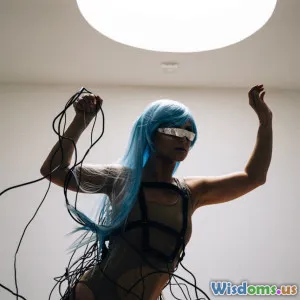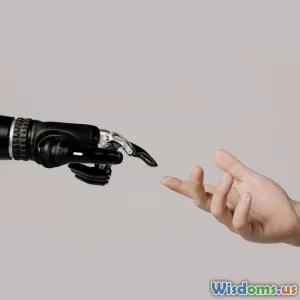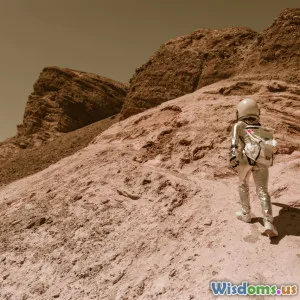
Do Dystopian Futures Warn Us or Hold Us Back
9 min read Explore whether dystopian futures in science fiction serve as warnings or barriers to progress. (0 Reviews)
Do Dystopian Futures Warn Us or Hold Us Back?
Introduction
Dystopian worlds—nations ruled by surveillance, societies crushed by authoritarian regimes, environments devastated by human greed—are staples of science fiction and modern storytelling. These visions of a bleak tomorrow captivate our imaginations and often unsettle us. But beneath their chilling facades lies an essential question: do dystopian futures serve primarily as warnings to keep us on a better path, or do they inadvertently imprison us in a mindset of fear and pessimism, holding society back from genuine progress? This article explores how dystopian narratives shape public perception, cultural mindset, and technological innovation, weighing their value as cautionary tales against the possibility that they may stifle hope.
Historical Origins of Dystopian Narratives
Understanding the dual nature of dystopian fiction requires tracing its roots. Classic novels like George Orwell's 1984 (1949) and Aldous Huxley's Brave New World (1932) are more than fictional tales—they are critiques of real-world ideologies and technological trends. Orwell’s depiction of oppressive governmental surveillance warned against totalitarianism, inspired by the experiences of World War II and contemporary political climates. Meanwhile, Huxley projected the societal impact of consumerism, genetic engineering, and psychological manipulation.
These works have had profound real-world impacts. For example, the term “Orwellian” has entered global lexicon to criticize invasive government programs, such as mass data collection revealed by Edward Snowden in 2013.
The Illuminating Power of Dystopian Warnings
Raising Awareness of Current Risks
One of the most valuable functions dystopian fiction serves is spotlighting dangers lurking within societal or technological trends before they become fully realized. Consider the novel The Circle by Dave Eggers, which explores the erosion of privacy caused by unchecked digital surveillance and social media obsession. As social platforms grow ever more invasive, the book’s projection offers a tangible, cautionary perspective.
These stories foster public debate, awareness, and sometimes policy change. The ongoing scrutiny of AI ethics and facial recognition stems partly from dystopian concerns popularized by media and fiction, pushing legislators to intervene with more stringent regulations.
Hypothetical Testing Grounds for Ethics and Innovation
Dystopian futures function as simulation spaces where ethical questions can be played out without real-world consequences. Sci-fi authors imaginatively test the societal reaction to technologies like genetic editing (e.g., Gattaca), AI overlords (Ex Machina), or climate catastrophe scenarios (The Water Knife by Paolo Bacigalupi). This speculative probing facing potential moral dilemmas encourages scientists, policymakers, and citizens to wrestle with “what if” scenarios carefully.
The Paralyzing Effect: How Dystopias May Hold Us Back
Breeding Cynicism and Fatalism
While raising awareness is key, dystopian storytelling often paints such bleak futures as inevitable, cultivating a sense of helplessness among readers and viewers. For instance, the pervasiveness of apocalyptic and dystopian narratives in popular culture—from The Hunger Games to Black Mirror—may lead audiences to accept social decline as predetermined rather than something changeable.
This fatalism can depress civic engagement and innovation by projecting despair instead of empowerment. A 2019 study by the Pew Research Center showed a significant portion of young adults across multiple countries reporting pessimism about the future, potentially linked to the dominance of bleak narratives in media.
Overemphasis on Dangers Over Potential
Focusing heavily on dystopian scenarios can eclipse the positive visions of the future represented by utopian or optimistic science fiction. Works like Star Trek, with its hopeful vision of space exploration and societal unity, contrast starkly with dystopian cautionary tales. When dystopian futures dominate discourse, they risk narrowing public imagination, discouraging efforts toward radically better futures by emphasizing what could go wrong instead of what could go right.
Real-World Examples: When Warnings Led to Action vs. When Fear Led to Stagnation
Successes in Preventing Disaster
Environmental policy changes inspired partly by dystopian narratives serve as encouraging evidence. Rachel Carson’s Silent Spring (1962), though nonfiction, ignited environmental awareness much like dystopian critiques, leading to pesticide reform and the rise of environmental movements globally.
Similarly, technology companies increasingly build privacy-conscious features partly driven by societal concerns over dystopian futures of over-surveillance.
Instances of Paralysis and Over-Caution
Conversely, innovation in areas like genetic engineering sometimes faces staunch public resistance fueled partially by dystopian horror stories. The debate surrounding CRISPR technologies echoes fears illustrated in dystopian works—fear of ‘designer babies’ and loss of natural human traits—leading to restrictive regulations in many countries. Though caution is necessary, excessive worry can limit beneficial breakthroughs.
Striking a Balance: Harnessing Dystopian Narratives Constructively
Encouraging Nuanced Perspectives
Dystopian futures do not have to be monolithic dark predictions. Authors like Octavia E. Butler combined bleak futures with empowering human resilience, showcasing complex societies where change is possible. Literature and media should aim for balanced narratives that acknowledge risks while suggesting potential agency.
Promoting Active Engagement and Solutions
Educational initiatives can use dystopias as springboards for critical thinking and problem-solving rather than despair. Climate fiction (“cli-fi”) workshops, for example, often end by encouraging participants to propose solutions for sustainable futures instead of only highlighting environmental collapse.
Collaboration Between Creators and Scientists
Closer collaboration between science fiction writers and technologists can produce futures that inspire innovation while responsibly outlining potential pitfalls. Examples such as the collaboration between sci-fi author Neal Stephenson and researchers on blockchain technology illustrates the power of storytelling that drives real-world innovation.
Conclusion
Dystopian futures hold a potent double-edged sword—they are essential for illuminating potential hazards and awakening public vigilance but risk fostering cynicism and immobilizing hope. Their role as warnings is invaluable, giving society critical foresight to navigate moral and technological challenges. However, cultural and creative communities must strive to balance these grim projections with hopeful, proactive narratives. By doing so, dystopian futures can become catalysts for progress, not roadblocks, motivating us to shape a better tomorrow rather than fear it.
Whether dystopian fiction warns us or holds us back ultimately depends on our response: do we accept these dark visions as prophecy, or do we treat them as calls to action?
References & Further Reading:
- Orwell, George. 1984. Secker & Warburg, 1949.
- Huxley, Aldous. Brave New World. Chatto & Windus, 1932.
- Eggers, Dave. The Circle. Knopf, 2013.
- Pew Research Center. (2019). Public Views on the Future.
- Bacigalupi, Paolo. The Water Knife. Vintage, 2015.
- Butler, Octavia E. Parable of the Sower. Four Walls Eight Windows, 1993.
Rate the Post
User Reviews
Popular Posts





















